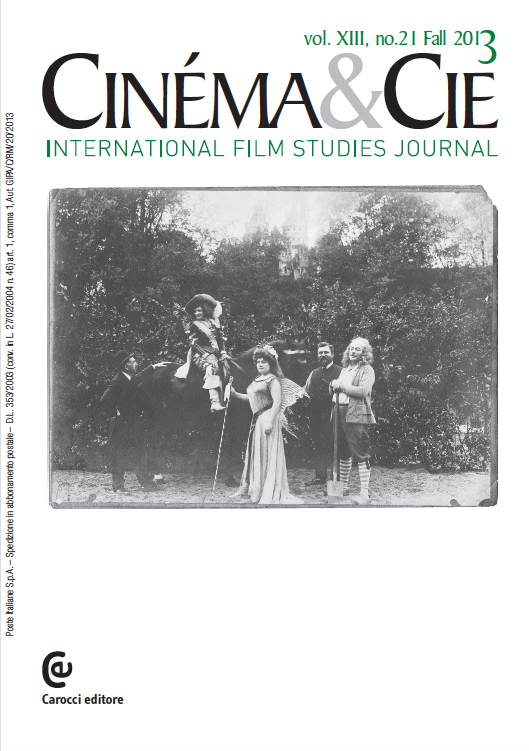Camera Distance and Max Linder at Pathé-Frères
Abstract
This article surveys staging practices in a sample of films from Pathé-Frères featuring the comedian Max Linder. The examination concerns the distance between camera and actor, and particularly the tendency in cinema by 1910 to reduce the distance in ways that enable the naturalism of actors' performances. This tendency, which was a transnational development involving the main production companies in Europe and the U.S. at around the same time, is approached through a comparative framework, with a focus on similarities between staging in the Linder Films and in the films directed contemporaneously by D.W.Griffith (Biograph). The analysis employs statistical methods in combinationwith conventional practices of film-historical research to show that Linder's films devoted more running time to shots featuring a reduced camera distance than Griffith's, and that the difference can be explained with reference to Linder's persona as a comic performer.






